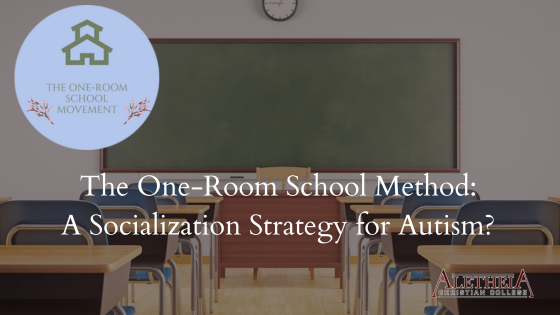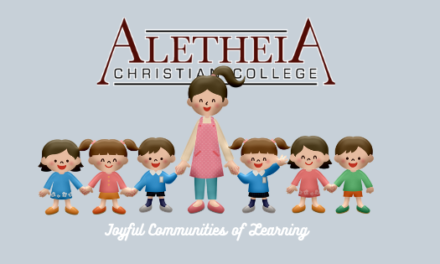In The Complete Guide to Asperger’s Syndrome, Dr. Tony Attwood states that it can be difficult for parents to obtain the large variety of socialization that an autistic child needs to be exposed to in order to prepare her for socialization with peers in the workplace and for a partner in later life. Dr. Attwood’s recommendation is that socialization of autistic children takes place in the school, recommending that the individualized plan for an autistic child will include structured socialization.
He is correct that it can be difficult to expose an autistic child to a large diversity of humanity in a homeschool, and I would argue that consolidated school systems with hundreds of children being funneled through a factory are doing poorer jobs of socializing children than a small school setting like a home or one-room school. It is difficult either way.
The One-Room School gives teachers and parents the opportunity to introduce autistic children to a wider variety of situations than just siblings. More importantly, a small, multi-level school gives neurotypical children the opportunity to practice interacting with classmates of different abilities.
Modern Education is a Factory
In a factory-system like modern education, you don’t have room for variation. A good management team seeks 6-sigma quality: variance of one per million. If that level of standardization was possible at school, students wouldn’t need to be socialized with their peers or need IEPs (Individualized Education Plans).
Before my kids were diagnosed with autism, we attempted to attend a public school when my wife was facing some unknown health issues. Simple individual requests, like having regular water to prevent dehydration, were ignored by teachers and the administration explained that until we got an IEP, our kids needed to just follow the rules.
After all, the rules are there for a reason.
It might just be that the reason has nothing to do with your kids’ education or health needs.
A school is not a factory because kids are not standardized products. If you want to socialize diverse children, you have to put them in diverse situations. A group of 30 kids filtered out by age and ability with ethnographic qualities determined by zip code is hardly a diverse setting.
The One-Room School: Unity with Diversity
In our one room schools, we have multiple ages and abilities in every classroom, even when the schools grow to two, three, and more rooms. Some one-room classrooms include students with diverse learning capabilities: Downs Syndrome, autism, dyslexia, neurotypical and more all learn together from and with each other. Many one-room classrooms include students from multiple language groups and nationalities.
An older autistic child has the opportunity to follow their passions and teach them to the younger classes. While older non-autistic children can learn how to show compassion on their peers who think and see the world differently.
When a Downs Syndrome child attends a one-room school, their unique and often joyful spirits light up the room and positively impact the education of everyone around them.
When Aspies attend a class, they bring a passion and love for their special projects that can inspire everyone around them. A good teacher will help the autistic child learn to appreciate other people’s passion for learning, even when she is not interested in the topic per se.
Yes, a consolidated, graded school system will have more resources to provide individualized education to a select few high need individuals.
But at what cost?
I would argue it is at the cost of children being able to learn to love and support each other in their differences now and for the rest of their lives as we all live in this wonderful world.




